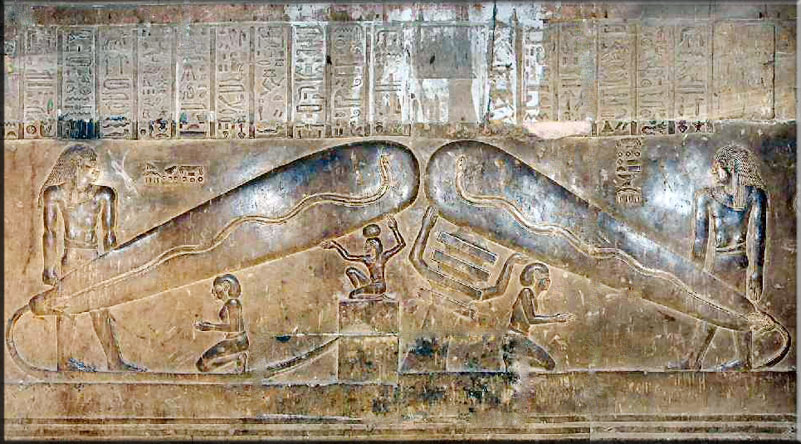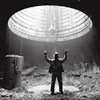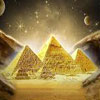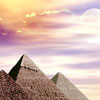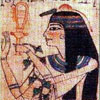The Mysterious Burning Lamps Of The Pyramids
In spite of amazing discoveries, the stark truth is that the early history of Egypt remains largely unknown and therefore unmapped territory. It is not possible, then, to say precisely how many miles of underground passageways and chambers beneath the Giza Plateau were lit, but one thing is for sure: unless the ancients could see in the dark, the vast subterranean areas were somehow illuminated. The same question is addressed of the interior of the Great Pyramid, and Egyptologists have agreed that flaming torches were not used, for ceilings had not been blackened with residual smoke.
From what is currently known about subsurface passageways under the Pyramid Plateau, it is possible to determine that there are at least three miles of passageways 10 to 12 stories below ground level. Both the Book of the Dead and the Pyramid Texts make striking references to “The Light-Makers”, and that extraordinary description may have referred to a body of people responsible for lighting the subterranean areas of their complexes.
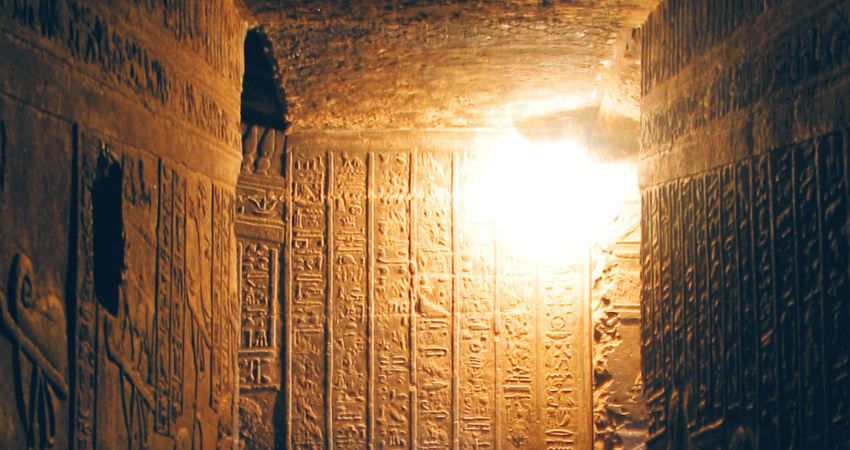 Iamblichus recorded a fascinating account that was found on a very ancient Egyptian papyrus held in a mosque in Cairo. It was part of a 100 BC story by an unknown author about a group of people who gained entry to underground chambers around Giza for exploratory purposes. They described their experience:
Iamblichus recorded a fascinating account that was found on a very ancient Egyptian papyrus held in a mosque in Cairo. It was part of a 100 BC story by an unknown author about a group of people who gained entry to underground chambers around Giza for exploratory purposes. They described their experience:
We came to a chamber. When we entered, it became automatically illuminated by light from a tube being the height of one man’s hand [approx. 6 inches or 15.24 cm] and thin, standing vertically in the corner. As we approached the tube, it shone brighter. . .the slaves were scared and ran away in the direction from which we had come! When I touched it, it went out. We made every effort to get the tube to glow again, but it would no longer provide light. In some chambers the light tubes worked and in others they did not. We broke open one of the tubes and it bled beads of silver-coloured liquid that ran fastly around the floor until they disappeared between the cracks (mercury?)
As time went on, the light tubes gradually began to fail and the priests removed them and stored them in an underground vault they specially built southeast of the plateau. It was their belief that the light tubes were created by their beloved Imhotep, who would some day return to make them work once again.
It was common practice among early Egyptians to seal lighted lamps in the sepulchres of their dead as offerings to their god or for the deceased to find their way to the “other side”. Among the tombs near Memphis (and in the Brahmin temples of India), lights were found operating in sealed chambers and vessels, but sudden exposure to air extinguished them or caused their fuel to evaporate.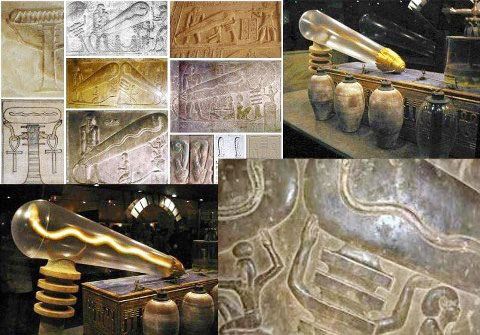 Greeks and Romans later followed that custom, and the tradition became generally established not only that of actual burning lamps, but miniature reproductions made in terracotta were buried with the dead.
Greeks and Romans later followed that custom, and the tradition became generally established not only that of actual burning lamps, but miniature reproductions made in terracotta were buried with the dead.
Some lamps were enclosed in circular vessels for protection, and instances are recorded where the original oil was found perfectly preserved in them after more than 2,000 years. There is ample proof from eyewitnesses that lamps were burning when the sepulchres were sealed, and it was declared by later bystanders that they were still burning when the vaults were opened hundreds of years later.
The possibility of preparing a fuel that would renew itself as rapidly as it was consumed was a source of considerable controversy among mediaeval authors, and numerous documents exist outlining their arguments. After due consideration of evidence at hand, it seemed well within the range of possibility that ancient Egyptian priest-chemists manufactured lamps that burned if not indefinitely then at least for considerable periods of time. Numerous authorities have written on the subject of ever-burning lamps, with W. Wynn Westcott estimating that the number of writers who have given the subject consideration as more than 150 and H. P. Blavatsky as 173. While conclusions reached by different authors are at a variance, a majority admitted the existence of the phenomenal lamps. Only a few maintained that the lamps would burn forever, but many were willing to concede that they might remain alight for several centuries without replenishment of fuel.
It was generally believed that the wicks of those perpetual lamps were made of braided or woven 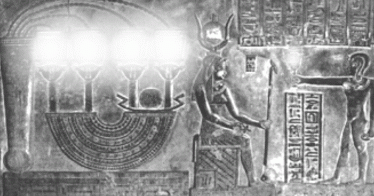 asbestos, called by early alchemists “salamander’s wool”. The fuel appeared to have been one of the products of alchemical research, possibly produced in the temple on Mt Sinai. Several formulae for making fuel for the lamps were preserved, and in H. P. Blavatsky’s profound work, Isis Unveiled, the author reprinted two complicated formulae from earlier authors of a fuel that “when made and lighted, will burn with a perpetual flame and you may set this lamp in any place where you please”.
asbestos, called by early alchemists “salamander’s wool”. The fuel appeared to have been one of the products of alchemical research, possibly produced in the temple on Mt Sinai. Several formulae for making fuel for the lamps were preserved, and in H. P. Blavatsky’s profound work, Isis Unveiled, the author reprinted two complicated formulae from earlier authors of a fuel that “when made and lighted, will burn with a perpetual flame and you may set this lamp in any place where you please”.
Some believe the fabled perpetual lamps of temples to be cunning mechanical contrivances, and some quite humorous explanations have been extended.
In Egypt, rich underground deposits of asphalt and petroleum exist, and some would have it that priests connected asbestos wicks by a secret duct to an oil deposit, which in turn connected to one or more lamps. Others thought that the belief that lamps burned indefinitely in tombs was the result of the fact that in some cases fumes resembling smoke poured forth from the entrances of newly opened vaults. Parties going in later, and discovering lamps scattered about the floor, assumed that they were the source of the fumes. There were some well-documented stories concerning the discovery of ever-burning lamps not only in Egypt but also in other parts of the world.
De Montfaucon de Villars gave this fascinating account of the opening of the vault of Rosicrucian Christian Rosenkreuz. When the Brethren entered the tomb of their illustrious founder 120 years after his death, they found a perpetual lamp brightly shining in a suspended manner from the ceiling. “There was a statue in armour [a robot] which destroyed the source of light when the chamber was opened.” That is strangely similar to the accounts of Arab historians who claimed that automatons guarded galleries under the Great Pyramid.
A 17th-century account recorded another story about a robot. In central England, a curious tomb was found containing an automaton that moved when an intruder stepped upon certain stones in the floor of the vault. At that time, the Rosicrucian controversy was at its height, so it was decided that the tomb was that of a Rosicrucian initiate. A countryman discovered the tomb, entered and found the interior brilliantly lit by a lamp hanging from the ceiling. As he walked toward the light, his weight depressed the floor stones and, at once, a seated figure in heavy armour began to move. Mechanically it rose to its feet and struck the lamp with an iron baton, destroying it and thus effectively preventing the discovery of the secret substance that maintained the flame. How long the lamp had burned was unknown, but the report said that it had been for a considerable number of years.
Excerpt from The Secret of the Bible
Posted in True History of Manwith comments disabled.

